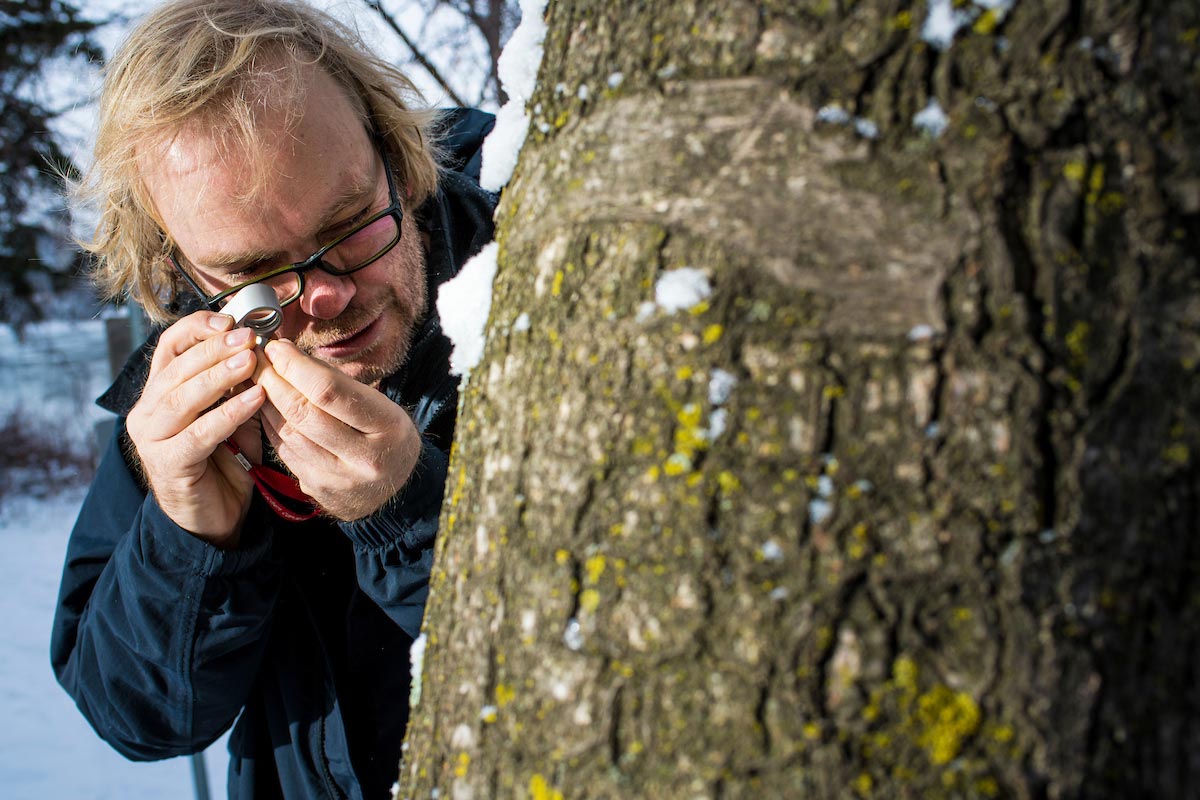
Toby Spribille, new assistant professor in biological sciences, followed his curiosity to answer a seemingly simple question: why do two supposedly identical lichens look so different from each other.
Meet the scientist who proved that it's not as simple as Alice Algae and Freddie Fungus taking a lichen to each other, landing him a coveted spot on the cover of the world's top peer-reviewed scientific journal.
Toby Spribille, new assistant professor in biological sciences, was just doing what any good scientist does. Following curiosity to answer a seemingly simple question: why do two supposedly identical lichens look so different from each other.
The difference between his approach to the problem versus a century-and-a-half of scientists who preceded to him was that he had next-generation DNA sequencing on his side. He perfected this technique of looking at whole genomes during his postdoctoral fellowship in Austria.
"We went in expecting to find two genomes--one for the fungus and one for the alga--as science textbooks and 140 years of passed down wisdom had told us to prepare for," said Spribille. "No matter how hard we tried to boil it down to just two genomes, we always found three. It came as a quite a surprise."
That third genome, previously undetected and also unsuspected, belonged to an unrelated group of fungi that formed yeasts. Spribille explained that these single-celled structures had perhaps been previously overlooked due to their tiny size, only three microns in width, similar to the length of an average bacterium.
"We looked at this genome and tried to place it in the tree of life and found that it belonged to a new order of fungi. We found it in every structurally complex lichen that we looked at, so basically any of the lichens that dominate landscapes anywhere in the world, including here in Alberta."
Spribille speculated that in addition to upending our understanding of these symbiotic species, an additional point which might have turned his finding into a Science cover story was that in addition to the discovery of a third player in lichens, the discovery shed somewhat of a critical light on the common approach of primer-based probes to detecting diversity.
"There's a kind of revolution going on in science right now, and it's partly associated with the revolution in DNA sequencing technologies. People bring our paper up as an example of how it's possible to miss things going in with primer-based methods, which are dominated by implicit bias. The discovery of a third partner in lichens gives us a handle by which we can go in and start to ask questions differently than we have in the past."
Spribille explained that next steps, which will form the focus of his work here at the University of Alberta, will be focusing on understanding the functional role of the presence of the yeast in these dominant lichens.
His own scientific roots trace back to his time growing up in Montana. "I came in as a naturalist. I wanted to know everything that was around me growing up in the mountains. I got hooked on lichens because they were telling stories about ecosystems that were not being told by a lot of other things I was seeing"
He ultimately completed his masters in Germany and PhD in post-doc in Austria, focusing his lichen field work in Montana, snap freezing samples as a portrait of a particular point in time. He is now turning his attention to the local lichens, already taking an active role in the Canadian conservation community.
Under his new tenure at the University of Alberta, Spribille will be teaching molecular evolution as well as a senior level fungal biology course, the first time such a course has been offered in almost a decade. If the global response to his Science story is any indication, the course promises to be popular. In addition to his teaching and research responsibilities, Spribille is committed to popularizing science for a mainstream audience, a focus that shifted following the mainstream media attention for the paper.
"There is this widespread feeling among the moss and lichen people of the world looking at smaller things that our work is of lesser interest. My experience in 2016 taught me to disagree. It's caused me to rethink my entire attitude towards my own discipline. I really believe in the importance of translating science like lichen evolution."
Spribille's story proves that you never know what seeds of inspiration will be planted where a little question leads to big discovery.